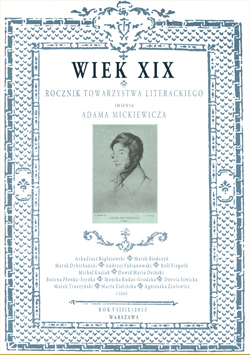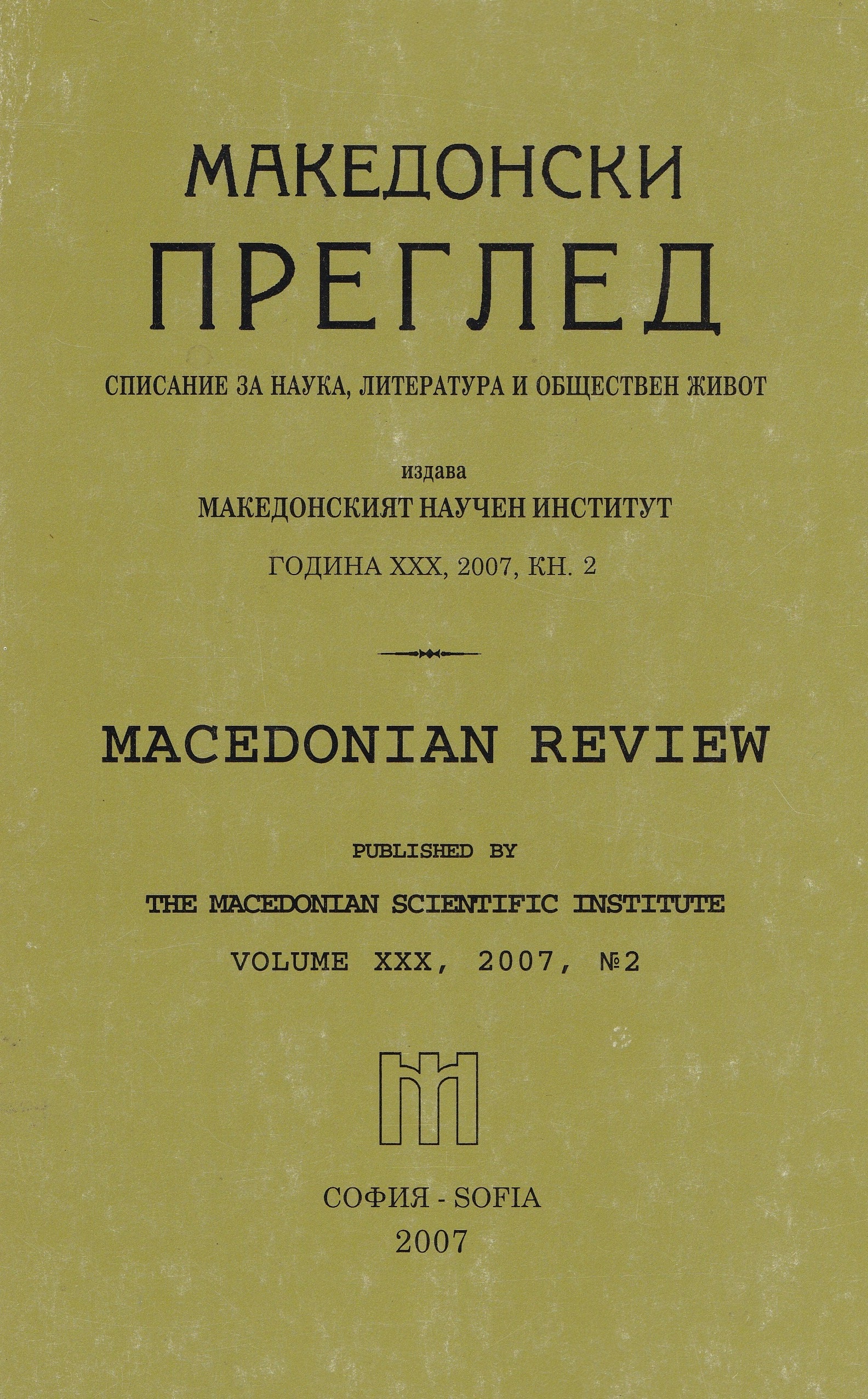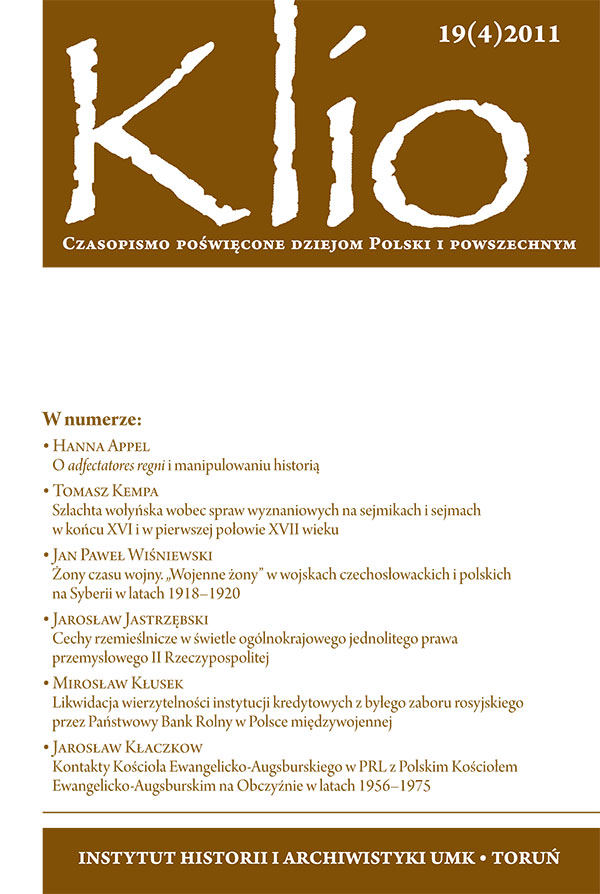
We kindly inform you that, as long as the subject affiliation of our 300.000+ articles is in progress, you might get unsufficient or no results on your third level or second level search. In this case, please broaden your search criteria.

At a boundary of the XIX—XX centuries the work of the teacher uniting educational and teaching components of educational process and designed to broadcast spiritual, moral and cultural samples was the most widespread profession of the intellectuals. Among the educational institutions of pre-revolutionary Russia which were carrying out vocational training of teachers the female gymnasiums which gave pupils secondary education deserve attention. In the last third of the XIX century at some of them special pedagogical classes were open that was an essential contribution to development of female secondary education. It promoted self-realization of many graduates as teachers of state and private educational institutions as well as house teachers and mentors.
More...
Musical criticism in Serbia can be traced back to 1825. Amateurs and professional musicians, however, started showing increased interest in making music in the 1880s. Since there were still very few educated musicians in the late nineteenth century, many lawyers, teachers, doctors, priests, and politicians, as well as many other intellectuals or music lovers wrote musical reviews. Many of them were also amateur performers. Until World War I, there were also plenty female musicians in Serbia and some of them were internationally recognized. Most women who were musicians at the time are today forgotten or unknown in the public. This paper represents a bibliography of newspaper articles from 1825 to the beginning of the Great War in which women who were musicians in Serbia are mentioned.
More...
This bibliography represents the fourth sequel of the bibliography of magazines Ženski svet: list dobrotvornih zadruga Srpkinja [Women’s World: The Newsletter of Charity Cooperatives of Serbian Women]. It encompasses the five years in which the magazine was published, from 1899 to 1903 and contains 973 bibliographic units described with de visu language using the script of the publication. As in the previous bibliographies, the units are placed in alphabetical order, according to the author’s surname or the title of the article – when the texts were not signed or when initials were used. Since all units have been entered into the joint database, the COBISS.ID number was provided together with the categorization of the article. In accordance with informative requests, registers that separate the title, the author and the topic have been included.
More...
In the period between the two World Wars in the Kingdom of Yugoslavia over a hundred titles of youth magazines and newspapers were published. The thematic diversity of youth interwar periodicals provides insight into different needs of young people at that time.
More...
The article investigates the uses of the motif of the Warrior Women in János Arany’s epic poetry. The author of the article claims that the motif of the Warrior Women in Arany’s poetical discourse stemmed from the romantic literary tradition of the 1820‒1830s. Furthermore, she argues that an old Scottish ballad, purportedly known by János Arany, provided the pattern that had been imitated by the Hungarian poet. Hence, the romantic image of the Hungarian Warrior Woman has become a highly symbolic and propagandistic content in Arany’s poetry during the 1850s. It reveals a genuine nineteenth-century endeavour of the nation-building process in order to promote the nation’s ready-to-fight patriotic women as models to be followed.
More...

This essay seeks to show the Polish household in the communist time as a space of modernity and modernisation activities. The chronological framework is set between 1957 – the date the Home Economics Committee affiliated to the League of Women was set up to contribute to, and be a mouthpiece of, the everyday life modernisation policy – and 1980, being the symbolic borderline between the modernity discourse and the Polish 1980–1 crisis discourse about household. In this context, the article reconstructs both the activities of social actors who created the ‘scenarios of modernity’ for the household and the reception of the messages in question in the village of Bogate in the District (powiat) of Przasnysz.
More...
This article discusses the key elements of Vasily Klyuchevsky’s interpretation of Polish history as well as the reception of it in Polish historiography, mainly in works by Marian Henryk Serejski and Katarzyna Błachowska. Vasily Klyuchevsky was one of the leading representatives of the Russian liberal historiography at the turn of the nineteenth and twentieth centuries
More...
The Reussendorfs were a burgher family from Lwówek (Löwenberg), appearing in sources from the end of the 13th century, whose history forms a good example of social advance of Sielsian middle class in medieval times. They rose in importance thanks to their service at the courts of Bolko I the Strict and Henry of Jawor (Jauer), and in the 14th century belonged to the most influential and the richest families in the Duchy of Świdnica-Jawor (Schweidnitz-Jauer).As a consequence of purchasing land estates as fiefs and the duty of military horse service connected to it, the Reussendorfs entered the ranks of knighthood, accepting the basic attributes of that class – the knight’s belt and coat-of-arms. Their high position is confirmed by numerous offices held by them, various castle fiefs possessed, as well as excellent marital colligations with the most powerful knightly families of the period. The peak of the Reussendorfs’ career occurred in the second half of the 14th century. Their importance diminished from the end of that century because of the extinction of one branch of the family and a large number of descendants (which caused fragmentation of the estate) in the other branch. Members of the family, earlier connected mainly to the region of Lwówek, became active also in the nearby regions of Lusatia and in Bolesławiec (Bunzlau).
More...
The supremacy of female authority in field such as ethnology or cultural-social anthropology, is here strongly related to the situation in European transitional scholarly communities. With a main example of “the rule of women” in Croatian ethnology from the mid-20th century up to today, it will be analysed as a matter of profound contextual causes which, when Eastern European setting is in question, reach as far as the paradox of “socialist national ethnologies” itself.
More...
My paper deals with some aspects of the Folk-Revival in Germany in the nineteen seventies. Jürgen Dittmar and David Engle said something concerning ballad singing in the German folk-scene of that time during the meeting in Edinburgh. I wanted to take a closer look at the role of women in some of the groups active in the folk-revival (Elster Silberflug, Fiedel Michel, Folkländer, Holzrädchen, Tonschusser, Wacholder,). I tried to show who made the decision concerning the repertories and which topics were preferred by women.
More...
Prisons constituted places where the female subjectivity crystallized in the nineteenth and early twentieth century. Imprisoned women were developing their feminist views, undergoing inner transformation, were engaged in spiritual work, and prepared themselves for future political activity. Women’s memoirs, letters, and other first-person narratives attest to that. In the case of female political activists, their imprisonment was perceived as an almost necessary stage in their spiritual and public development. The process of formulating female subjectivity was parallel to the process of liberating oneself from family networks and social conventions. Women had no rights in the nineteenth century. They lived family lives and frequently had no opportunity to confront themselves as individuals. In prison a woman was given a chance to gain an understanding of her “self.” Solitude, a limited but private space of the prison cell, and ample time, all constituted emancipatory factors. An important element of women’s prison experience was becoming politically on cell, and ample time, all constituted emancipatory factors. An important element of women’s prison experience was becoming politically conscious. For many women the years spent in prison were the most important time of their entire lives. For example, Narcyza Żmichowska, Halina Krahelska, Zofia Dzierżyńska, and Zofia Kirkor-Kiedroniowa had undergone the process of a symbolic liberation of self from an external system of control, which was then supplanted by an internal mechanism of self-discipline. These women subverted the design of the system of power that had placed them in prison: they worked out rules and regulations akin to those that governed daily practices of nuns and monks in convents, thereby enabling a transformation of spiritual life.
More...

The article has a purpose to draw attention to discussions which have started in the seventies of the last century. These discussions have led to creating two ways of writing about women’s role in the ancient world: American and French. In the first model, “women history” is treated as an autonomic research discipline. Strong relationships with cultural anthropology and research concentrated on relationships between women and men are characteristic for the second model. Utilising gender theory in research about women’s roles in the graeco-roman world allowed highlighting new areas (outside the private sphere) in which women were active.
More...
Review of: Mikołaj Tomaszewski - Andrzej Radzimiński, Kobieta w średniowiecznej Europie, Wydawnictwo Naukowe UMK, Toruń 2012, ss. 351
More...
Publikację, jak i zorganizowanie wokół niej dyskusji uważam za bardzo ważne. Sądzę, że kultura od zawsze była zróżnicowana wewnętrznie i dobrze się dzieje, jeśli tę różnorodność się uwalnia, czego wyrazem w historiografii jest historia kobiet. Poza tym uważam, że w humanistyce polskiej mamy do czynienia z pokoleniową zmianą, której przedstawiciele będą zainteresowani tą publikacją, jak i innymi związanymi z historiografią kobiet, które ukazały się z inicjatywy poznańskiego ośrodka metodologicznego.
More...
Współczesna francuska historia kobiet. Dokonania – perspektywy – krytyka jest bez wątpienia pozycją unikatową na polskim rynku publikacji naukowych. Przygotowana przez kompetentnych badaczy, książka prezentuje nie tylko rozległą panoramę francuskiej historii kobiet, ale również zawiera pogłębioną analizę problemów teoretycznych, jakie niosą za sobą idee rozwijane w ramach tego nurtu pisarstwa historycznego. Podkreślenia godny jest fakt wykraczania programu pracy poza ramy opisu afirmatywnego.
More...
Chciałbym wystąpić tutaj przede wszystkim w roli nie tyle współautora książki napisanej wraz z Marią Solarską, ile czytelnika oraz (nie bezkrytycznego) admiratora cyklu publikacji przez nią napisanych lub przetłumaczonych. Mam na myśli w szczególności trzy książki: pracę o historiografii kobiet we Francji, w której najważniejsza jest część pierwsza napisana przez Marię (druga część przeze mnie), antologię francuskiego feminizmu materialistycznego skomponowaną i przetłumaczoną przez Solarską wraz z Martyną Borowicz, wreszcie książkę najnowszą, analizującą potencjał krytyczny historiografii kobiet, nie tylko francuskiej.
More...
Na początku dziękuję organizatorom panelu wokół książki Współczesna francuska historia kobiet. Dokonania – perspektywy – krytyka w toruńskim CSW, szczególnie Tomaszowi Falkowskiemu i Katarzynie Pękackiej-Falkowskiej, za pomysł, zaproszenie i umożliwienie dyskusji z badaczkami/badaczami i czytelniczkami/czytelnikami reprezentującymi różne dziedziny nauki i podejścia poznawcze.
More...